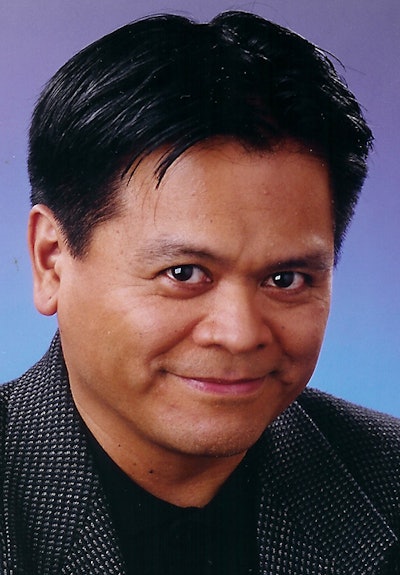Like many of you I followed the trial in the murder of Ahmaud Arbery. Just as the Rev. Al Sharpton said, I thought the trial was historical and could change perceptions of how to deal with race in America.
Maybe even in higher ed.
Think of what happened. Three white defendants, one a former cop, another former military, another a diligent neighbor, accused of murdering an unarmed Black man in the Deep South. The jury is nearly all-white (11 of 12), with defense attorneys working hard to dismiss all but one potential Black juror. That made it 91 percent white in a county that is nearly 30 percent Black. It wasn’t reflective of the community’s real diversity.
And the jury convicted the three white defendants. What were the odds of unanimous convictions for felony murder for all three? I saw the trial on TV, and I thought not knowing the jury, it was at best a coinflip. Emil Guillermo
Emil Guillermo
The difference maker? The prosecutor Linda Dunikoski.
She was criticized for not mentioning race enough, for not calling the alleged crime what it was—the lynching of an innocent, unarmed Black man in America.
But would that approach have worked with an the nearly all-white jury?
In the delicate matters of race, Dunikoski chose to appeal to the jury’s vanity, calling them hardworking and smart. And then assuming they would make the right decision and apply the law based on the facts. There was the 9-11 call where defendant Travis McMichael essentially says the only crime happening is that a Black man is running away from him; and then there was a video taken by another defendant, William Roddie Bryan, that shows Travis McMichael pointing a shotgun at the unarmed Arbery, then fighting over the gun which ultimately kills Arbery.
But then Dunikoski made sure there would be no automatic sympathy for the defendants.
“Y’all are really smart,” she said. And then she took away any “good ol’ boy” empathy.”
“This isn’t about whether these three men are good people or bad people,” Dunikoski said narrowing the task for the jurors, who were looking to get the job done and get home for the holidays.
“It’s about responsibility. It’s about holding people accountable and responsible for their actions,” Dunikoski said.
In other words, you don’t have to condemn these men to hell for being bad, or praise them for being good. Just look at what happened. An innocent, unarmed Black man was killed. The law is clear. Hold the people who did that accountable for their actions.
It was a shift in perspective that cleared a path.
And then she appealed to their own self-interest, pressing on that idea of accountability. “Who would get a free pass? Would you get a free pass?”
That was like a green light to do the right thing, and not the white thing. Jurors wouldn’t get a pass, why should Travis McMichael, Greg McMichael, or William Roddie Bryan?
That’s how I heard the close. It’s as if Dunikoski gave the all-white jurors permission to leave any vestige of Jim Crow behind. These were good men who had to be held accountable for a bad thing they did.
No mention of race, which would have just clouded the issue and possibly engendered sympathy for those “good men” who were just trying to protect their neighborhood from a stranger.
It was a skillful non-mention of race to overcome all the obstacles. There were two district attorneys, one indicted over the handling of the case, both of whom had to recuse themselves. The problem was there was no willingness to even arrests the suspects who were relying on a now defunct “citizen’s arrest law.” And then even when it got to trial, the potential jurors were challenged so a nearly all-white jury was left.
It was an uphill battle for justice. But Dunikoski knew not talking about race would be the best way to deal with a Glynn County community steeped in racial history.
Is there a lesson for higher ed? Is there a faster way to get to diversity goals if we appeal to shared values of truth, equity, and accountability?
Is there a way to get to diversity goals if it isn’t directly linked to overcoming racial discrimination of the past, but rather to goals reflecting a modern diverse 21st century world that your institution is part of?
The debate is still on-going. People are still intransigent on issues of “affirmative action.” Those excluded feel put upon, punished, and claim reverse discrimination.
“Affirmative Action” is still the best way to get the results we need for diversity. But would it be different if we talked about race lightly a la Dunikoski? Not in an ignorant colorblind way, but in a way that shows diversity as a shared value that makes all our institutions better?
Would that not lead to diversity happening naturally?
Maybe part of the push back we get on diversity could be mitigated if it doesn’t feel punitive to those who are left out.
When ten admission spaces that all went to whites, now are distributed to a diverse pool, what do we tell the rejected? Making it the institution’s problem for lack of resources may help in the acceptance of certain outcomes. But it’s just a strategic reframing that may help people see the situation for what it is.
Last week, a light hand on race seemed to work for Ahmaud Arbery’s family and all those looking for racial justice before a nearly all-white jury in Georgia.
Emil Guillermo is a journalist and commentator, and former adjunct professor. He writes for the Asian American Legal Defense and Education Fund. You can follow him on Twitter @emilamok



















